
What Inspires Sound Design’s All-Star Talent?
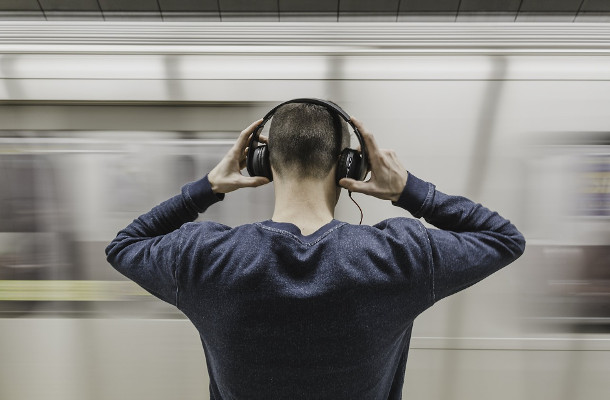
Sometimes you’ll watch something and know that you like it, but you have no idea exactly why it’s so good. Expert sound design is often the reason for this, but the majority of us can’t explain exactly what good sound design is.
The world’s top sound designers are constantly working away in their studios to make sure the films they’re working on have this intangible effect on audiences, but how do you choose the right sound designer for your film?
LBB’s Alex Reeves picked out some of the best to find out what makes them tick and how they approach sound in their own unique style.
Arge
ENVY, London
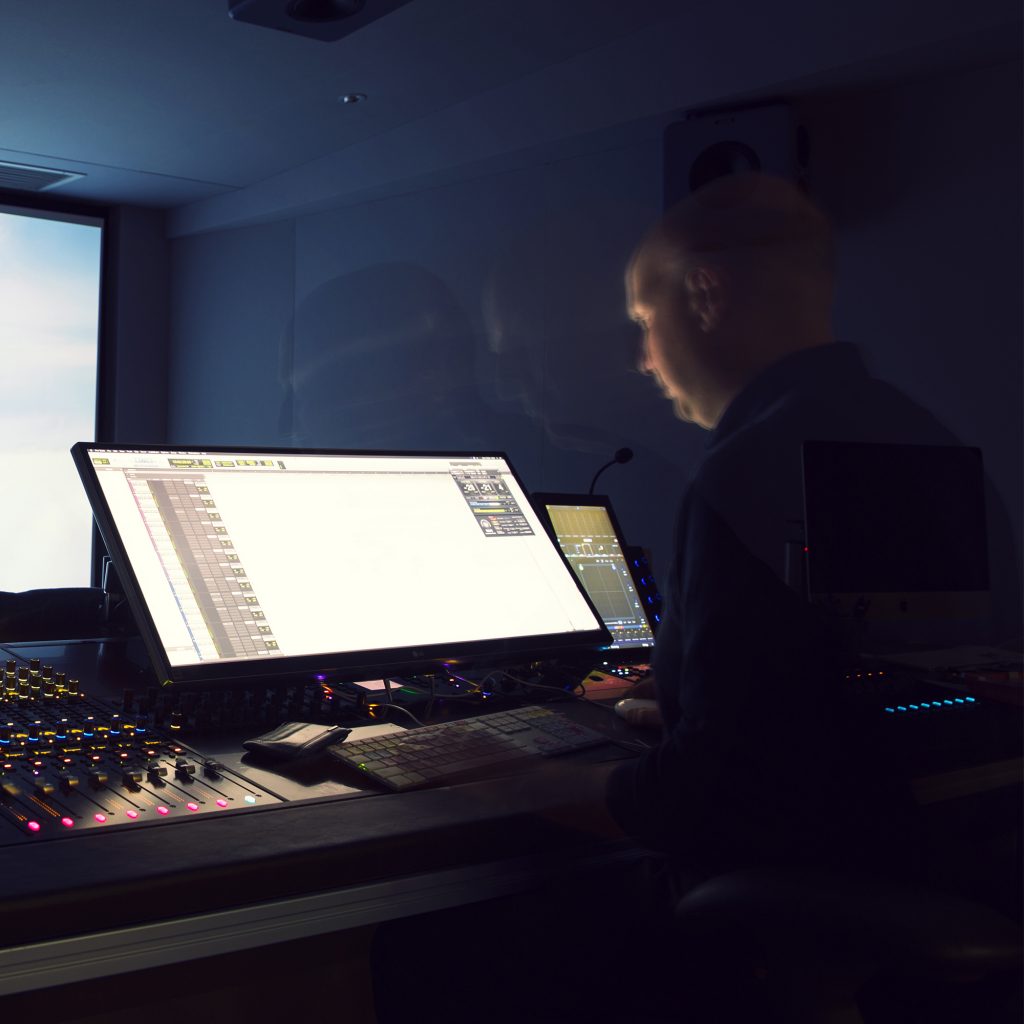
LBB> What first inspired you to become a sound designer? And how did you get there?
A> The first sound effect I ever remember making were some comedy horse hooves for my local amateur dramatics society’s latest play. I was about 15. The sound got a round of applause when I played it at every performance. It went down so well it actually got a mention in the theatre’s monthly newsletter. “Ahh, the power of sound,” I thought to myself. From then I was hooked.
Like everyone, I started my career by making the tea, unsuccessfully! I then landed a job on bookings in a post house, but spent every other minute of my free time in the sound studio. Eventually I convinced by boss I’d be more useful in the studio than on the bookings desk. Risky as I was actually pretty good on bookings.
LBB> What do you draw on as influences or inspiration when you’re working on a project?
A> Unsurprisingly so many influences come from the movies. I probably have to see a lot of films twice because I spend too much time listening to the sounds and not paying attention to the plot.
As much as the latest blockbuster superhero movie or sci-fi soundtrack excites me, I think a lot of art in movie sound can be found in less obvious places. Most recent examples being the film Lady Macbeth or Darren Aronofsky’s Mother! Two films completely reliant on sound design and no music.
Much earlier great examples would include Hitchcock’s The Birds.
These stories are told through the sound design alone, no music. Emotions and narrative are dictated just with sound effects. This is the sort of sound I find inspirational.
Every client loves it when you tell them you’ll apply something interesting you saw in a great film to their project. Likewise if they’ve seen something in film, and you are able to successfully apply it to their project. They’ll be very happy.
For this reason keeping up on film releases is obviously very important!
LBB> How would you describe your personal style of sound design?
A> I’m always aiming for a point where you get an emotional response from a good piece of sound design. As you would a good piece of music.
I also enjoy the point where the line between sound design and music become blurred. Even where the sound design is playing the actual role of the music, replacing the music completely.
But to be honest, just as importantly, I enjoy greatly a project where the client feels their film, prior to bringing it to me, hasn’t lived up to their hopes. It just didn’t turn out the way they wanted. This I see as an opportunity and challenge. It’s my job now to help them fall in love with their film again.
Nothing is more satisfying than a project that a client didn’t like prior to the sound session, and loved when the sound mix was finished. That’s a good day.
LBB> What piece of work are you most proud of?
A> Really it’s not just about if you made a great sound mix. It’s really more about your relationship with the client along the way, and what obstacles you’ve had to get over and how you dealt with them.
The most important thing is ‘did the client believe they made the right choice using you?’ However big or small the job your primary objective is to always make sure they did make the right choice. That’s it.
However there are many jobs I’m very proud of over the years. Although within my colleagues and clients I famously have the catch phrase “Nothing is ever finished, it is only delivered”
Recently I completed a lovely project with a great team for Sky Sports launch of F1 2018.
It was an example of pure sound design - no music. Starting completely from zero. The film starts on the Melbourne F1 track as the cars prepare to accelerate, someone then presses the rewind button. What we now instead see is a vivid glimpse at F1's build-up in reverse. Paint is applied, bolts tightened, and sketches perfected before we're propelled back to the starting grid.
The objective for the sound design on this project was to help enhance the backwards theme of the film using a dramatic, interesting and often unusual sound scape. As well as this the sound design should help guide us through the narrative and reinforce the story. As well as crucially building tension and excitement and overall just be enjoyable to listen to.
The task for any singular sound throughout was to make it fit the following criteria. Primarily, does it feel like it’s backwards? When often most sounds don’t actually sound any different backwards to forwards! So, through a series of tricks, the illusion that it is backwards needed to be created. But as well as that, is it an interesting and enjoyable sound to listen to? Does it provoke an emotional response that will make you want to listen again? Also does it sound contemporary and “cool”? If any sound didn’t fit all this criteria, it didn’t go in!
Remembering on a project such as this - without music - the sound design also needs to do everything a music track would also normally do. It should lead you in an emotional direction as well as telling the story and adding excitement.
Sam Ashwell
750mph, London
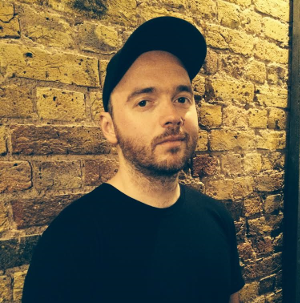
LBB> What first inspired you to become a sound designer? And how did you get there?
SA> I’ve always had a strong interest in music and sound from an early age, around the age of 16 I began collecting studio hardware and figuring out how to make sounds and write beats.
At the same time, I also had a passion for film, theatre and computers and all my family worked in advertising. I guess all the strands came together around the age of 21 and I started applying for jobs in audio post facilities around Soho. (took a year to get an interview!) I then got offered a running job at Saunders and Gordon and 750 on the same day.
LBB> What do you draw on as influences or inspiration when you’re working on a project?
SA> That really depends on the type of project and what is needed from me. But in general, I am inspired and influenced by what I hear around me, or my interpretation/memory of it, as well as movies, video games, music, other adverts... my imagination!!
More specifically, on a project it can be messing around with a synth patch or an effect that can inspire me, even a small segment of an atmos can send me in a particular direction. I also love happy accidents, dropping a midi sequence onto a wrong track or sending something to the wrong bus.
I guess also, a lot of inspiration comes from the films themselves, some of the visuals I get to work with are amazing.
LBB> How would you describe your personal style of sound design?
SA> I'd like to think in general it's purposeful and punchy! (Unless a delicate and light touch is needed). I like things to be bold whether it be the use of strong sounds or the spaces around them. I am not afraid of things feeling a little bit cutty at times and I love a good perspective change!
I also have a selection of reverbs, processors and synths that I enjoy... so that probably gives my stuff a certain sound/style.
LBB> What piece of work are you most proud of?
SA> Recently I'd have to say the Nike Londoner project, Honda 'Dream Makers' and Eon 'Freedom is Electric'. They were all quite unique and fresh, a real labour of love for everyone involved. I was very pleased with the outcome on all of them.
On a more historical note Nike 'Last Game', Ikea 'Beds' and 'Playing With My friends', Army 'Boots' SCA "Red.Fit' and VW 'Alien', I was all pretty pleased with all those.
Will Cohen
String and Tins, London
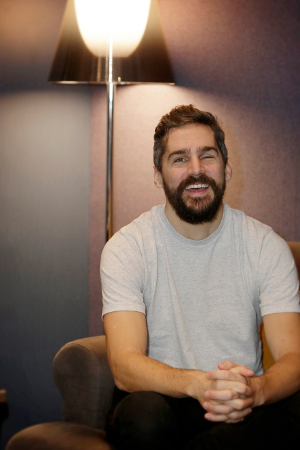
LBB> What first inspired you to become a sound designer? And how did you get there?
WC> To be honest as a kid I had no real preconceptions about sound design - I was fixated with the idea of being involved in music and computers and thought I would become a producer or studio engineer. It wasn't until I sent CVs to every studio in London at the age of 21, that I realised there was a whole industry dedicated to what my friends would go on to describe as 'messing about with coconuts for horse hooves'.
I realised that there was potential longevity in terms of my creative interest in the world of post production rather than pop music. I took a job at a big facility and worked my way up from running, to managing the transfer department, to being a studio engineer. As I started to write more music for my clients I realised that maybe I wanted to do things my own way (I think we all do, hah!), so I went freelance for a few years and eventually set up String and Tins... I'm still here now.
LBB> What do you draw on as influences or inspiration when you’re working on a project?
WC> To me the most important thing in terms of finding inspiration for a project is: what can I do to help the story, guide the viewer's emotions, heighten the visual effects and find the silence and space within all that? Depending on the style, should it be abstract, or should it be heavily concentrated on the physics of the objects in the frame? Getting a director's treatment and agency script early on in pre-production and opening lines of communication with them, means that I can get on the same page as them and potentially generate some ideas they haven't thought of - that can be rewarding for the project as a whole.
I guess I am influenced by the world around me much the same as anyone else - I try not to pay too much attention to other people’s work as such but often when starting a project I might look for references relevant to the film. For instance if a project is meant to be a certain genre or feel then clearly it's useful to think about the recording processes and limitations that genre might have. I also have great respect for the work of my peers in the industry, at String and Tins and other facilities too - there's a lot of talent out there and it's inspiring to hear different people's sonic viewpoint on the world, and try and unpick how it was done.
I am afraid to say I'm a bit of a geek: it's boring to say perhaps, but I'm also inspired by technology and the tools that I get to use for my job. I love electronics, I love synths, but I also have a background in classical music - I guess my youth of DJing drum and bass and playing in orchestras has played a big part in shaping what I care about.
LBB> How would you describe your personal style of sound design?
WC> Every job has a different treatment, so it's not easy to answer but I suppose I particularly enjoy working on projects where the soundtrack is not so separated, where music and sound effects don't feel like two different channels that can be switched on and off, more one homogenous unit.
I also like the jobs where I get to help people experience the physics of something out of the ordinary, like making a sound for the little planet blasting into a lake of mercury that then forms a suspended speaker made out of little balls - it was a Vue cinemas ident I did a couple of years ago that plays before all the films at Vue theatres. I suppose CGI and VFX heavy projects are where a sound designer gets to 'make believe' - I guess that's my favourite kind of job!
LBB> What piece of work are you most proud of?
WC> I try to make sure I'm proud of them all! But probably a film called 'Brother Printer Orchestra' which involved weeks of working with director Chris Cairns and his team developing a mish mash of hacked old electronics in order to make them play a Bob Dylan tune with their motors, all for real and done in one take. I re-arranged the track on my laptop, which triggered all these machines via midi - we then recorded them all and what you see is what you hear basically - not your traditional sound design job really. But it was such hard work and I learned so much doing it that I still watch it back with a smile.
Louis Enslin
Produce Sound, Johannesburg
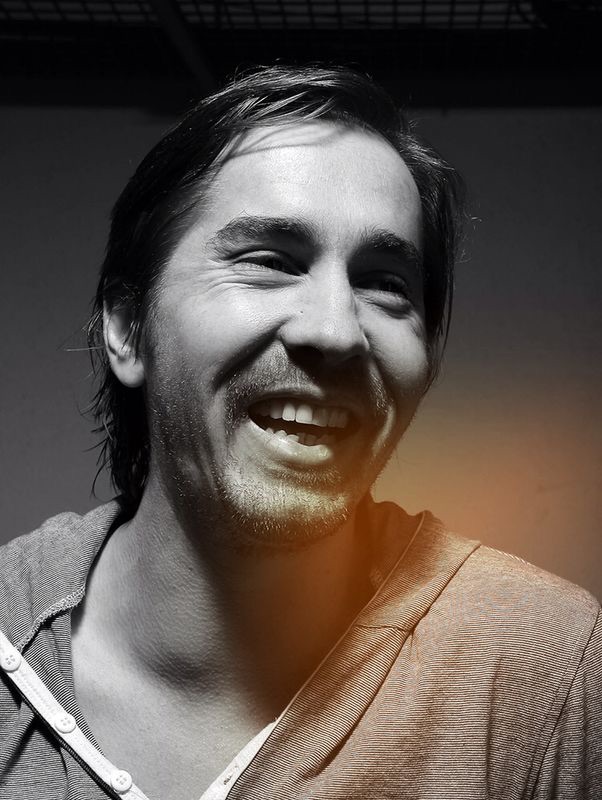
LBB> What first inspired you to become a sound designer? And how did you get there?
LE> I always had a love for music and at school played in various local bands. I dreamed of becoming a rockstar and music producer, like any 20-year-old guitar player does.
During my second year of studying Sound Engineering, I started off working in musical theatre and soon after that got a job at a small post production audio studio. And that’s where I got introduced to the world of sound design. Coming from a musical background, I always saw sound and music as one element, and try to integrate it as such. And that’s where it all started.
LBB> What do you draw on as influences or inspiration when you’re working on a project?
LE> YouTube. Don’t shoot me!
LBB> How would you describe your personal style of sound design?
LE> That’s difficult to say as you need to be able to adapt to so many different projects, genres, styles and the people who work on them. But I always try and implement an organic feel to what I do. And create “musical sound design” pieces.
LBB> What piece of work are you most proud of?
LE> There are so many, and for so many reasons. So I can’t single one out. there’s a couple that I can mention, and not that they were necessarily the best pieces of work.
This was my first little music composition job. I did sell myself as a composer, but was sort of thrown in the deep end, and had to come up with something all the way back in 2003
This was just fun - make car sounds with your guitar and go crazy.
One recent project that I enjoyed:
Tom Jucarone
Sound Lounge, New York City

LBB> What first inspired you to become a sound designer? And how did you get there?
TJ> As much as I love sound design, and even though I do so much of it, I really consider
myself a mixer/sound designer. I feel mixing and sound design are really two different arts and are approached differently.
As far as inspiration, I actually got inspired by doing it. When I started mixing, clients would ask for unique sounds and I would have to create them. I was naturally drawn to the act of creating and sculpting sound. I felt that each type of sound, be it voice, music or sound effects, were each their own kind of instrument, and I could be the composer and arranger of those instruments.
LBB> What do you draw on as influences or inspiration when you’re working on a project?
TJ> I mostly get inspiration from the project itself and the vision the creatives have for it. I definitely like to have the people who came up with the idea communicate their viewpoint. I also like to hear from the editor on the project. It gives me a start at developing a sound design viewpoint. Just like a good picture edit can guide your eyes to what to look at, good sound can guide your mind to focus on what’s important and even how to feel.
I like to describe sound design as a process of discovery. You discover what sounds contribute the best by experimenting. I try not to approach a project with a rigid concept. Sometimes sounds that you wouldn’t expect are the sounds that work the best.
LBB> How would you describe your personal style of sound design?
TJ> Shape-Shifting. I try not to have a personal style as much as letting every project define its own style. Each project doesn’t necessarily dictate a style, but presents itself with a style, or style choices, as you work on it. Even though much of the actual sound design process is somewhat solitary, you’re always really part of a team responding to and integrating creative ideas from your clients. That also influences direction and style.
LBB> What piece of work are you most proud of?
TJ> That’s not fair. That’s like asking a father with thousands of children which one he is most proud of. I put my heart and soul into each of them and I’m proud of all of them.
Alex Nicholls-Lee
Wave Studios, Amsterdam
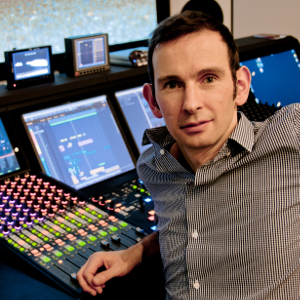
LBB> What first inspired you to become a sound designer? And how did you get there?
ANL> I have an early memory of my music teacher challenging me to compose a piece for the piano using only alternative techniques - and it was a concept I truly embraced. With combinations of elbow stabs to the keyboard, rhythmical lid slamming and pencils dropped onto the hammers, the end result sounded more like I’d thrown a harp down the stairs. But the real learning here was that a simple change of perspective can create far wider opportunities for sound creation.
My second enlightenment was when I finally understood that my fascination with audio, my hobby, could also pay the bills. From the moment I found a job as a runner at an audio-post studio, I realised that the only tools I needed were passion, reliability, and a readiness to be nudged into the deep end when the opportunity came.
LBB> What do you draw on as influences or inspiration when you’re working on a project?
ANL> The thing about a career in sound is that that you’re constantly monitoring your environment, always listening – how can you ever put the job down? We’re all endlessly adding to our real-world knowledge of sounds and how they change as we move, and I often find myself playing Spot-the-stock-SFX on everything I watch. Rather than reach for the sound library, it’s far more satisfying to begin projects with an experimental preamble: By considering the science behind any reference sound and trying to recreate the essence of that in the studio. For instance, last week I was making the sound of “glitter” by teasing sand through the strings of a hammered dulcimer – moments like this keep the work fresh and fulfilling.
I also rely on that unsettling feeling when creatives have completely contrasting ideas to you. It wrong-foots you into places you’d have never ventured, and tends to lead towards a better outcome.
It’s so instinctive as to whether something sounds good or drab; it’s so black and white. I find most inspiration comes from that subconscious study in sound. It becomes your taste; it becomes the decisions you make whilst working.
LBB> How would you describe your personal style of sound design?
ANL> I’m always excited to explore the use of rhythmical and tonal elements, and especially the detailed frame-shifting of voiceover timings.
It’s also good the keep the sound design sympathetic to the soundtrack, both in taste and in tune, and then choose moments for a more detailed approach wisely. Sometimes each shot should be about one focus sound, or none at all.
I’m also very image conscious - the stereo image, that is.
LBB> What piece of work are you most proud of?
ANL> Helping people achieve their goals is one of life’s great pleasures, and as a sound designer you have the chance to do that daily. The guys at WeArePi spoke with such clarity and passion when we were discussing the Desperados TrainTrax project that it was utterly infectious. Mount Kimbie play a set on a train, with the added quirk that their instruments are being influenced by sensors both inside and outside the carriage: Speed sensors, light sensors that all output midi information, plus crowd-triggered sounds too. As well as editing and mixing several 40-track recordings to fit the picture, we had to make it sound both seamless and live too. I love how simplistic and honest the end result sounds, but in fact there are layer upon layer of additional synth and drum sounds, constant perspective changes and a full tracklay of crowds, spot effects and atmos elements wrapped around it. I just can’t get enough of innovative, deep-concept projects like this.
Chris Turner
Jungle Studios, London
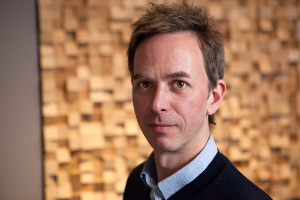
LBB> What first inspired you to become a sound designer? And how did you get there?
CT> My generation saw an explosion in home technology – from the computer and VHS to the Walkman, the 808 drum machine and the Korg M1. The world’s obsession with tinkering with tech and making noise became my obsession.
Fast forward to 1996 and I was a music engineer. I moved to London to further my career and took a job at a post house. I’d never done sound to picture before, and instantly loved the added dimension. It was then I knew I wanted to be a sound designer. I phoned Jungle (then called Zoo) but they had no vacancies so I offered to do a day for free the next time they needed cover, I was asked if I could go in on the Friday and I’ve been there ever since.
LBB> What do you draw on as influences or inspiration when you’re working on a project?
CT> My job as a sound designer is to tell stories using sound. Every project is a blank canvas and a new opportunity to experiment. Inspiration is everywhere so I’m always listening to my surroundings and love collecting sounds. With experience you learn what works, so you can do the organic bit quickly, giving you more time to push the boundaries.
LBB> How would you describe your personal style of sound design?
CT> In advertising you need to work across all genres so it’s good to be broad-minded in your tastes, but I love the opportunity to work on dark industrial soundscapes: sport, cars and action. Most ads are quite traditional so when something different comes along you really want to be the one to raise the bar.
LBB> What piece of work are you most proud of?
CT> I’ve done ads that the public adore; work other sound designers would give a friendly nod; projects that were too brave to be released and work where the music changed at the last minute and ruined everything.
Of everything I’ve done, the project that from start to finish never changed course, was challenging, the public loved and sound designers offered a friendly nod to was BBC Sport’s promo for the Rio Olympics ‘The Greatest Show on Earth’. The work spanned many mediums and channels yet the sound design remained consistent; all backed with a great score from Jamie N Commons and Native Music.













